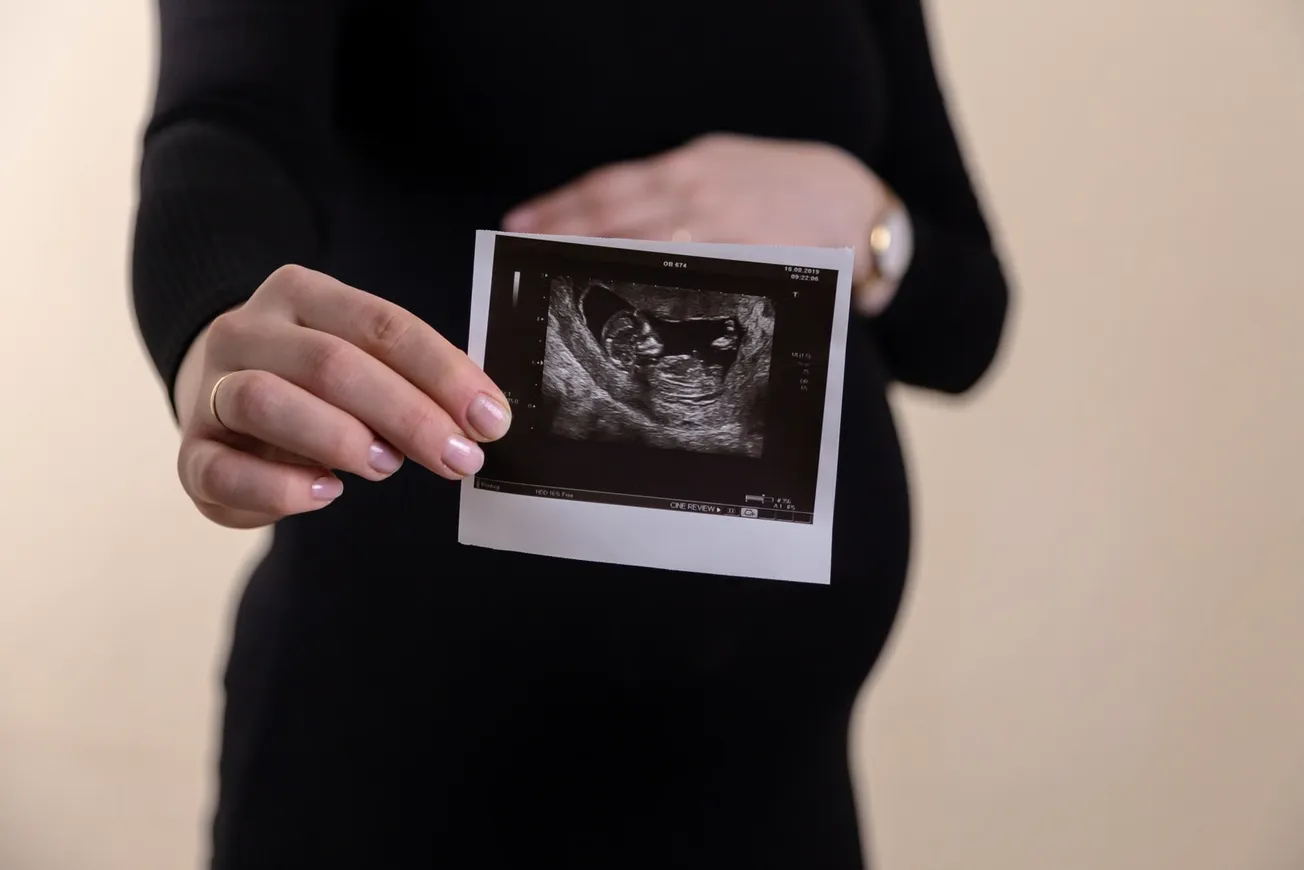Arthur Goldberg
mercatornet.com
Arthur Goldberg is the former Co-Director of the American based Jewish Institute for Global Awareness,and JONAH, Inc. JIFGA sponsored www.fundingmorality.com, a crowd-funding site for those committed to Biblical values. He has authored Light in the Closet: Torah, Homosexuality, and the Power to Change.
The Dobbs decision accelerated the division between those who favour abortion under any circumstance and those who believe that an unborn child should be protected from the moment of conception. As the debate continues, a consensus position appears to be emerging. It would approve a ban on abortion after a specific week of pregnancy or when a particular physical activity occurs during pregnancy.
A majority of Americans now support banning abortion once an unborn child’s heartbeat is detected.
As the idea that once an infant’s heartbeat is heard gains currency as the dividing line between permitting or prohibiting abortion, the left has developed a strategy to reinvent when foetal heartbeats occur. However, before discussing such attempted redefinition and its consequences, it is relevant to briefly review the history of foetal heartbeat legislation.
Brief history of foetal heartbeat laws
In 2011, a feisty and creative Ohioan pro-lifer, Janet Folger Porter, initiated a campaign for an idea she developed to prohibit abortion after a foetal heartbeat is detectable. After all, she reasoned, if the sign of death is when a heart stops beating, then the beginning of life should be defined as the time the heart starts beating. As she explained, “The heartbeat is the medical measurement of life. It’s the reason you’ve never been to the funeral of someone with a heartbeat.”
Over the past decade, Janet succeeded in introducing such legislation in 29 states, with 10 states enacting them into law (some of which are under court challenges). In 2017, 174 co-sponsors introduced a heartbeat protection bill in the US Congress. Although it did not ultimately pass, I wrote an article supporting the legislation and explained how scientific advances in foetal medicine recognized the unborn child as a viable human being.
The emerging field of foetal medicine permits doctors to treat the foetus as a patient and thus diagnose foetal abnormalities and illnesses in the womb. Such a fact points to the reality that the foetus is a separate living human being who should be valued as a person with legal standing. Indeed, the concept of “foetal rights” is gaining currency in other contexts. State legislatures, courts and law enforcement agencies are beginning to recognize embryos and foetuses as separate from the women who carry them.
There are several examples of conditions that are successfully treated within the womb by foetal medicine practitioners. There is foetal anaemia, a condition in which the quantity of circulating red blood cells and haemoglobin in a foetus falls below normal levels. If severe enough, heart failure or brain damage can result. To prevent such heart or brain damage, an anaemic foetus can be treated by transfusing blood through the mother’s abdominal wall into the umbilical cord.
Another example is congenital diaphragmatic hernia (CDH), a condition in which the unborn child’s diaphragm has a hole in it. Without correction, the unborn child’s stomach, spleen, and intestines drift upward and prevent lung development, causing the baby to die shortly after birth. Thankfully, CDH can now be corrected by inserting a tiny balloon through a foetus’s mouth and into his/her windpipe.
Foetal surgical methods can also repair a condition called spina bifida, a malformed spinal cord, prior to birth by opening the uterus in order to close the opening in the baby’s back while he/she is still in the womb.
Such treatments have begun as early as eight weeks after conception, shortly after medical devices can begin to detect a baby’s heartbeat, according to Dr Yuval Gielchinsky, a senior physician trained in molecular biology in the Department of Obstetrics and Gynecology of the Hadassah Hospital in Israel.
Attempt to redefine foetal heartbeats
Recognizing the potential popularity of foetal heartbeat laws that prohibit abortions once such a heartbeat is detected, the proponents of abortion on demand created a campaign suggesting “that’s not a real heartbeat.”
This campaign recently received tons of publicity when Stacey Abrams, the Democratic gubernatorial candidate in Georgia, announced: “There is no such thing as a heartbeat at six weeks. It is a manufactured sound designed to convince people that men have the right to take control of a woman’s body.” The absurdity of the latter part of her statement is truly not worth wasting space on. However, the first part of her comment concerning the heartbeat being a “manufactured sound” is a deceptive factual misstatement that the left now declares to be accurate.
Last month, Planned Parenthood, a principal proponent of abortion on demand, changed how it described an unborn baby’s heartbeat. Dr Calum Miller, a British medical doctor, ethicist, and lecturer at Oxford University, points out that before the popularity of heartbeat laws, Planned Parenthood correctly characterized the activity as a real heartbeat. When previously describing week five to six of pregnancy, Planned Parenthood’s website read: “a very basic beating heart and circulatory system develop.” However, to now avoid defining the activity in question as a heartbeat, it revised the website to instead read: “A part of the embryo starts to show cardiac activity. It sounds like a heartbeat on an ultrasound, but it’s not a fully formed heart – It’s the earliest stage of the heart developing.”
To politically support the abortion on demand crowd, the American College of Obstetricians and Gynecologists issued a guideline that says: “Until the chambers of the heart have been developed and can be detected via ultrasound (roughly 17-20 weeks of gestation), it is not accurate to characterize the embryo’s or foetuses cardiac development as a heartbeat.”
What is the significance of these language modifications? As one pro-life commentator makes clear “Several states have laws that prohibit abortions once the foetal heartbeat begins, and if you are committed to extending the death zone for babies, you want that heartbeat to start as late as conceivable.”
The truth about foetal heartbeats
Several experts set forth the reality of the early detection of the heartbeat and deny the truthfulness of the redefinitions by those supporting abortion on demand. For example, Dr Tara Sander Lee, senior fellow and director of life sciences at the non-profit Charlotte Losier Institute explains, “While some people falsely claim that a preborn baby at 6 weeks gestation is just a clump of cells, science demonstrates the baby is already a complex human being. A preborn baby’s heart is actively beating at 6 weeks and will have already beat nearly 16 million times by 15 weeks. In fact, at 6 weeks gestation, the baby’s heart rate is about 110 beats per minute, which can be easily detected by ultrasound.”
Well-known institutions agree. When describing pregnancy, the prestigious Mayo Clinic website informs us that “A baby’s cardiovascular system begins developing five weeks into pregnancy, or three weeks after conception. The heart starts to beat shortly afterward. “
Across the ocean, the highly respected British Heart Foundation at the University of Oxford published a study suggesting that the human heart may begin beating as early as 16 days after conception. “The heart is the first organ to form during pregnancy and is critical to providing oxygen and nutrients to the developing embryo.”
Others report minor time differences that (1) a transvaginal ultrasound may detect the heartbeat as early as five weeks after the last menstrual period and (2) a Doppler device of echograms may do so as early as four and half weeks.
Dr. Donna Harrison, CEO of the American Association of Pro-Life Obstretricians and Gynecologists, summarizes that the misinformation statements by pro-abortionists ignore evidence from basic embryology. “In fact, at six weeks’ gestation, the embryonic heart rhythmically contracts to pump blood through its arteries, which flows to the placenta to exchange carbon dioxide for oxygen.” Continuing, she states, “To call this anything other than a beating heart is dishonest, and serves only to dehumanize preborn people … Playing semantics with the definition of a heart does nothing to serve science or the public, but rather only advances a pro-abortion agenda.”
Scientific evidence is consistent with universal moral values
Scientific reality in foetal medicine harmonizes with a set of universal moral and ethical values established by G-d and is applicable to all of humanity. These shared moral values comprise the Noahide Laws, the bedrock of beliefs shared by Judaism, Christianity, and Islam. This biblically based code was revealed to Noah after the Flood. The Noahide laws were authoritatively reiterated through the Ten Commandments on Mt. Sinai over 3,000 years ago. They involve prohibitions on idolatry, blasphemy, forbidden sexual relationships, theft, murder, lawlessness, and the improper treatment of nature.
Noahide Law clearly prohibits killing an innocent foetus. Even apart from Biblical revelation, reason alone leads to the inescapable absolute truth that it is always wrong to intentionally kill an innocent human being. Clearly, no one is more innocent than an unborn child.
When we combine this moral foundation found in the Noahide Laws with our knowledge of foetal medicine and in particular when an unborn child’s heart begins to beat, our path forward is clear: to recreate a culture of life and, in the process, to ignore the attempted redefinition of when an unborn child’s heart starts beating.









